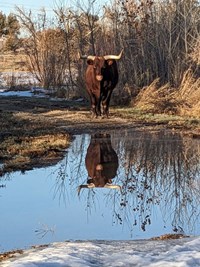- Lesson Plan (25)
- Field Trips (11)
- Distance Learning (7)
- Traveling Trunk (2)
- Student Activities (1)
- Great Smoky Mountains National Park (9)
- Cape Lookout National Seashore (3)
- Haleakalā National Park (3)
- Homestead National Historical Park (3)
- Acadia National Park (2)
- Arches National Park (2)
- Cuyahoga Valley National Park (2)
- Glacier National Park (2)
- Lake Clark National Park & Preserve (2)
- Show More ...
- Science (40)
- Social Studies (12)
- Literacy and Language Arts (6)
- Math (3)
- 6-8.RH.7 (4)
- 6-8.RH.4 (3)
- 6-8.RH.5 (3)
- 6-8.RH.6 (3)
- 6-8.RST.4 (3)
- 6-8.RST.6 (3)
- 6-8.RST.7 (3)
- 11-12.RST.2 (2)
- 11-12.RST.4 (2)
- Show More ...
Showing 46 results for biological inventory ...
Biological Biography
Biological Indicators
- Type: Lesson Plan
- Grade Levels: High School: Ninth Grade through Twelfth Grade

Macroinvertebrates can be found in bodies of water buried in sediments and detritus or attached to rocks or plants. They are visible without magnification and can be used by scientists to measure water quality. In this lesson, introduce your students to these organisms and to the use of a dichotomous key. Students will hone basic identification skills to increase the reliability of data they may collect during a visit to Cuyahoga Valley National Park.
Biological Diversity Field Study
- Type: Lesson Plan
- Grade Levels: Middle School: Sixth Grade through Eighth Grade
Agriculture and Inventions
Inventory + Monitoring Evaluations
The Invention Factory: Thomas Edison's Laboratories
- Type: Lesson Plan
- Grade Levels: Middle School: Sixth Grade through Eighth Grade

The lesson could be used in teaching units on the industrialization of the United States, the development of science and technology, or social change in the United States in the late 19th and early 20th centuries. Students will discover how Edison systematized the process of inventing, allowing for the rapid development and production of inventions that improved the lives of millions of people.
Terrestrial Invertebrate Biodiversity Inventory - High School Field Trip
- Type: Field Trips
- Grade Levels: High School: Ninth Grade through Twelfth Grade
The goal of these field trip activities is to help high school students become familiar with terrestrial invertebrates and understand the biodiversity of Great Smoky Mountains National Park. This field trip packet includes onsite activities accompanied by a preparation activity and a wrap-up activity.
Terrestrial Invertebrate Biodiversity Inventory - Middle School Field Trip
- Type: Field Trips
- Grade Levels: Middle School: Sixth Grade through Eighth Grade
The goal of these field trip activities is to help middle school students become familiar with terrestrial invertebrates and understand the biodiversity of Great Smoky Mountains National Park. This field trip packet includes onsite activities accompanied by a preparation activity and a wrap-up activity.
Freeing the Elwha (Salmonid Natural History)
What's in the Water?
- Type: Lesson Plan
- Grade Levels: High School: Ninth Grade through Twelfth Grade

Water quality is measured using many physical, chemical, and biological assessments. In this lesson, introduce your students to five water chemistry tests. Students will become familiar with pH, nitrates, phosphates, dissolved oxygen and turbidity and their relationship to the Cuyahoga River Watershed. They will begin to understand acceptable test value ranges, make connections between water quality and the biological community and become familiar with the causes of poor water quality.
Water Quality Monitoring - High School
- Type: Field Trips
- Grade Levels: High School: Ninth Grade through Twelfth Grade
Students work through pre-field trip activities that introduce them to vocabulary, methods and aquatic invertebrate orders. During the field trip, students will explore a park stream to monitor its health based on chemical and biological indicators.
Tree Phenology Monitoring - High School Field Trip
- Type: Field Trips
- Grade Levels: High School: Ninth Grade through Twelfth Grade
Tree Phenology Monitoring - Middle School Field Trip
- Type: Field Trips
- Grade Levels: Middle School: Sixth Grade through Eighth Grade
Fossil Teeth: Changing Climates and Evolutionary Responses Preserved in the Fossil Record (Lesson Plan by Geoscientist-in-the-Park Gina Roberti)
- Type: Lesson Plan
- Grade Levels: High School: Ninth Grade through Twelfth Grade

Students will look at changes in tooth size and shape (morphology) in the fossil record of herbivorous mammals in North America using data from a recent paleontological study. Students will infer factors which caused the observed evolutionary adaptions and link biological adaptation with global climate change and localized habitat change.
Juan's Draft Pick Lesson Plan
- Type: Lesson Plan
- Grade Levels: Upper Elementary: Third Grade through Fifth Grade

Whether by pulling a wagon, cart, or saddle bag, animals powered the goods to be traded and transferred to their destination. The fur trade era simply could not have taken place without the aid of horses, mules, and oxen. The lesson examines the pros and cons of using these animals as transportation based on their characteristics and biological needs.
Enviro Musical Chairs
- Type: Lesson Plan
- Grade Levels: Middle School: Sixth Grade through Eighth Grade

There's a certain mystique about the word “biodiversity” that seems to be associated with images of steamy jungles or wondrous new medicines, but the word more specifically refers to the number of species or 'species richness' of an area. One reason why tropical areas are so fascinating is that they contain the highest numbers of plant and animal species found anywhere on earth.American Samoa sits squarely in the tropics, so we should have a high biological diversity here, but we do and we don't
Shark Traveling Trunk
- Type: Traveling Trunk
- Grade Levels: Upper Elementary: Third Grade through Fifth Grade
Whale Traveling Trunk
- Type: Traveling Trunk
- Grade Levels: Upper Elementary: Third Grade through Fifth Grade
Always Changing
- Type: Lesson Plan
- Grade Levels: Middle School: Sixth Grade through Eighth Grade
Working in three teams, students will use reference material to create and present a play showing 100 years of change for each forest type.










